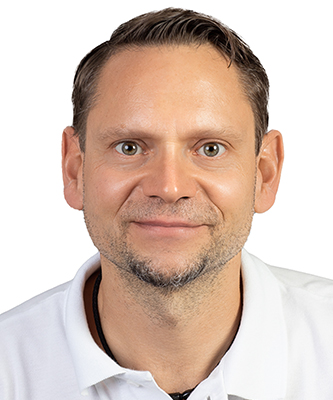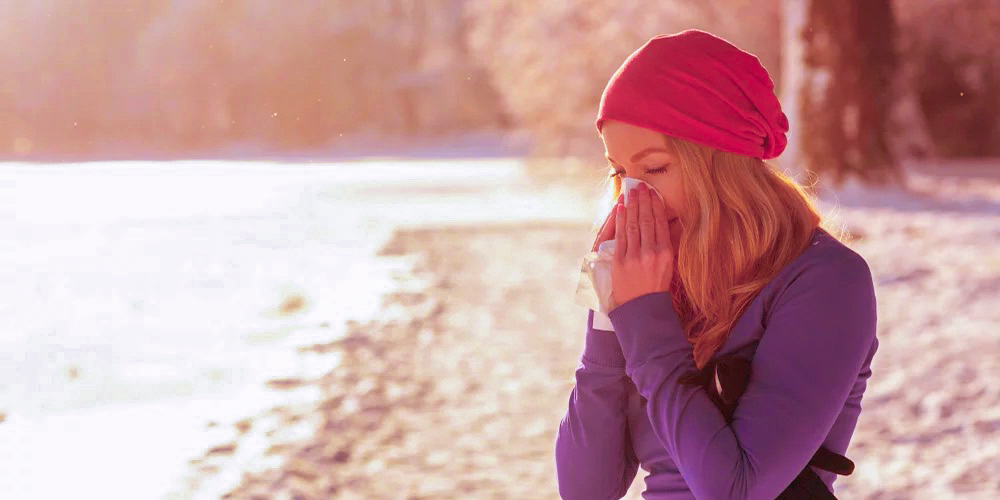When training for a seasonal goal, a cold is rather inconvenient. But there is no point in sticking to a strict training plan. The body needs strength to cope with the infection. Symptoms such as tiredness and weakness must therefore be taken seriously. If you overdo it with your training, you risk serious consequences that require a longer break.

Author: Hardy Hüttemann, doctor, sports medicine specialist SEMS/manual medicine SAMM, head of Medbase medicine Basel Heuwaage.
Is it possible to continue training with a cold or Covid-19 infection?
Intensive training as in the usual conditions is not advisable, because the body needs its resources to fight the cold virus. If you only have a runny nose, however, you can do light, regenerative training. This means training at maximum basic endurance level 1 (Z2), with a pulse of 60-70% of maximum power. So if your maximum heart rate is 180-200, for example, you should limit yourself to a speed you can manage at 120-140 beats per minute. However, athletes should not compensate for the reduced intensity with a longer training duration. It is also not the right time to experiment with new types of training: if your body is already in bad shape, you should not confront it with something unfamiliar.
When is it a mild cold?
If it is only a mild cold or cough, without fever and with a fair amount of fitness, your state of health is not a concern. A reliable indicator is the resting pulse rate. If it is barely elevated in the morning, it means that the cold does not seem to stress the organism too much. At this point, you can proceed with your normal programme.
When is it advisable to stop training?
If the resting heart rate is five to ten beats higher than usual, it is a good idea to let the body rest. Modern heart rate monitors also register an increased need for regeneration by measuring the variability of the heart rate: In a healthy, relaxed state, the heart rate is usually slightly arrhythmic. As soon as the body is stressed, it becomes more regular. The deviation is on the order of milliseconds, which is why it cannot be measured by hand. If you have no cold symptoms, you need to think about other possible causes of the increased pulse. Perhaps you have simply slept badly or are in a state of overtraining. Athletes are also more susceptible to infections and have an increased need for recovery.
No fever does not mean healthy
When you have a cold, you do not necessarily have a fever, at most a slightly elevated temperature. However, this does not mean that you are healthy and can follow your exercise plan. Fever is however something very individual: some people have a fever even with mild illnesses, others remain practically fever-free even with severe illnesses.
Intense training with a cold is dangerous
Intensive training weakens the immune system. If the body cannot fight off the infection adequately, there is a risk of inflammation of the heart muscle – in technical terms, myocarditis. This is an inflammation of the cells of the muscle tissue. Typical symptoms are shortness of breath, chest pain and cardiac arrhythmia. But these symptoms do not always occur. Sometimes myocarditis simply manifests itself with severe and persistent tiredness and weakness – symptoms that, in turn, can also be present in colds or flu without myocarditis. The disease usually heals on its own, but training and competitions are not achievable for three to six months.
Better take a break than get seriously ill
In winter, colds, sore throats and coughs are common, in recent years also due to the Coronavirus pandemic. If you are training for a spring race and want to stick to a training plan, an illness naturally does not fit into the plans at all. Many people are afraid of throwing away all the preparation done in the previous months. But if you take a week or two off and then slowly resume training, you will usually soon regain your initial fitness level. This is certainly better than provoking myocarditis with hard training.
Performance diagnostics at Medbase
The sports scientists and sports physicians at Medbase check your performance level with an endurance test. Based on this, they explain to you in a clear and uncomplicated way how you can optimally incorporate the results into your training.
Book now
So it is better to go to bed?
Strict bed rest is not necessary in the case of a cold. Even with a stuffy nose and a cough, a walk in the fresh air is good for you, preferably in daylight. The loose movement promotes blood flow to the mucous membranes and thus recovery.
How can you recover quickly?
A miracle cure that immediately eliminates all symptoms has not yet been invented. However, depending on the symptoms, it is possible to promote healing with various natural methods. The chances of success are greater if you react immediately to the first sneeze and sore throat: Drink hot tea (e.g. sage, thyme, ginger) and possibly gargle and rinse your nose. In the case of a severe cough, inhalations help clear the airways. You can also support the immune system with a vitamin-rich diet, fresh turmeric, a preparation with echinacea extract and possibly food supplements with elements such as zinc and vitamin C.
When can training be resumed?
As soon as the resting pulse returns to normal and there are no more symptoms. The first time, however, you should not overdo it, but shift up a gear and then slowly increase. A good body feeling is also important for ambitious athletes. Sport should be fun and not a compulsion.
Who is Medbase?
Medbase is the largest multidisciplinary sports medicine network in Switzerland and offers specialised sports medicine services for athletes, clubs and sports associations at all levels of activity in the areas of sports medicine, sports physiotherapy, performance diagnostics and training advice.

